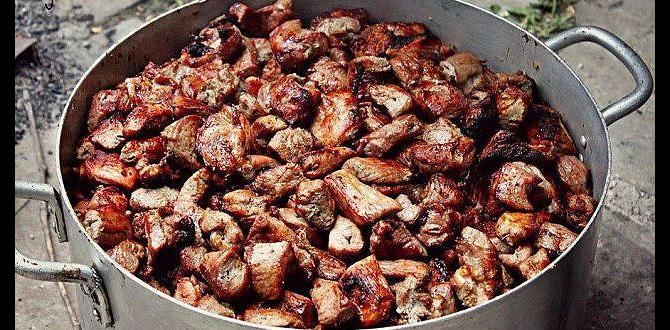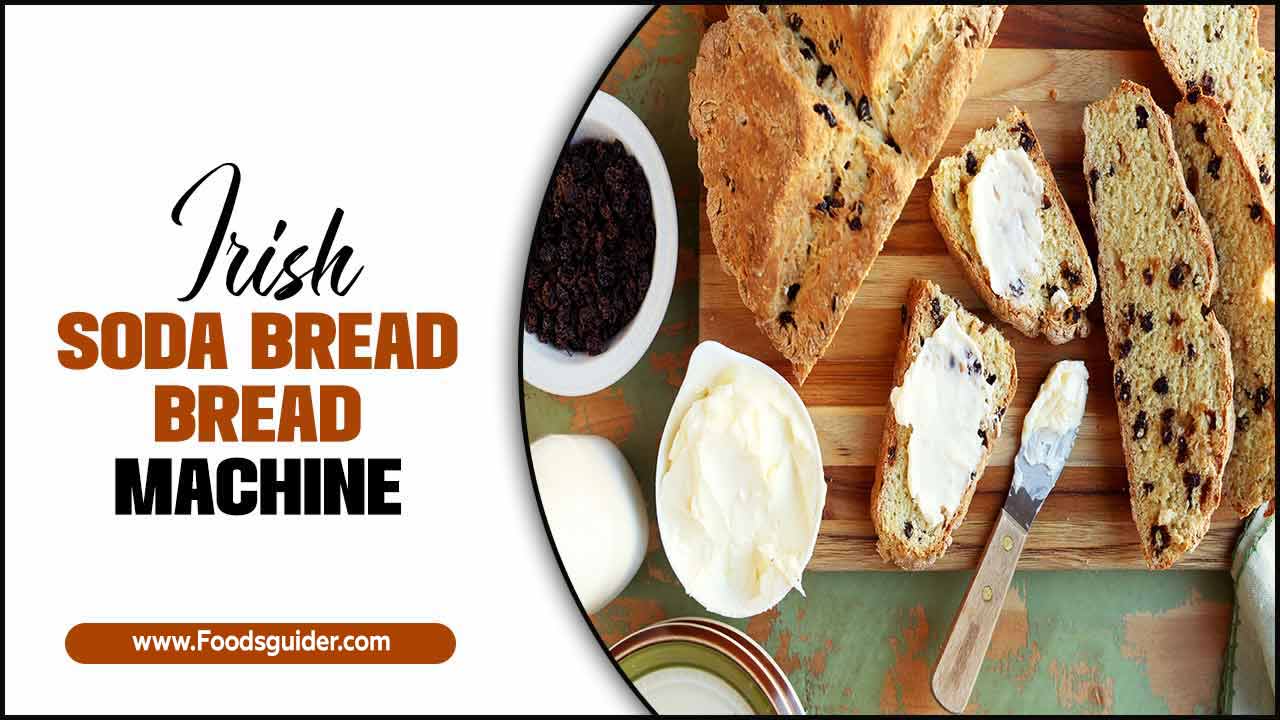Quick Summary:
The Fish and Chips Trail UK is a delightful culinary journey for seafood and potato lovers. This guide helps you discover the best spots, understand the history, and enjoy this iconic British dish like a pro, making your tasting adventure easy and unforgettable.
The Ultimate Fish and Chips Trail UK: Your Beginner’s Guide
Craving that perfect, crispy fish and fluffy chips? The UK is famous for its incredible fish and chips, but finding the absolute best can feel like a quest! Don’t worry, whether you’re a local or a visitor, this guide is here to make your fish and chips adventure simple and delicious. We’ll explore what makes great fish and chips, where to find top-rated spots, and how to truly savour this classic. Get ready to embark on a tasty journey!
Decoding the Perfect Fish and Chips
What makes fish and chips so special? It’s more than just fried food; it’s an art! A truly great plate balances textures and flavours perfectly. Let’s break down the magic:
The Fish: Freshness is Key
The star of the show is, of course, the fish. The most popular choices are:
- Cod: Flaky, white, and mild. A classic for a reason!
- Haddock: Slightly sweeter and richer than cod, with a satisfying texture. Often considered the premium choice.
- Pollock: A more budget-friendly option that’s still delicious, with a milder flavour.
The best fish and chip shops source their fish fresh, often from sustainable fisheries like those certified by the Marine Stewardship Council (MSC). This ensures quality and environmental responsibility.
The Batter: Crispy Perfection
A good batter is light, crispy, and golden brown. It should complement, not overpower, the fish. Common ingredients include flour, water, and often a raising agent like baking powder or beer, which gives it a light, airy crispness. Too thick and greasy, and it ruins the fish. Too thin and it might burn or fall off.
The Chips: The Perfect Partner
Chips should be fluffy on the inside and crisp on the outside. They’re usually made from Maris Piper, King Edward, or Agria potatoes, known for their fluffy texture when cooked. They should be cut thick enough to hold their shape but not so thick that they’re raw in the middle.
Accompaniments: The Finishing Touches
No fish and chips is complete without the right extras:
- Salt and Malt Vinegar: The classic pairing. The tang of the vinegar cuts through the richness of the fried fish beautifully.
- Mushy Peas: A traditional side, made from rehydrated marrowfat peas. Creamy and comforting.
- Curry Sauce: A popular addition, offering a mild, sweet, and savoury flavour.
- Tartar Sauce: Creamy, tangy, and packed with capers and pickles.
Embarking On Your Fish and Chips Trail UK Adventure
The UK is dotted with fantastic fish and chip shops, from traditional seaside chippies to award-winning restaurants. While “the best” is subjective and often debated, here’s how to approach your trail:
Planning Your Route
Are you exploring a specific region, or looking for nationwide gems? Consider:
- Seaside Towns: Expect super-fresh catches and a classic seaside experience.
- City Favourites: Many cities boast legendary fish and chip shops, often with a modern twist.
- Rural Charm: Discover hidden local treasures in smaller villages.
You might want to focus on areas known for their seafood or simply follow recommendations from trusted sources.
Identifying Top Spots
How do you find award-winning or highly-rated places? Look for:
- Industry Awards: The National Fish & Chip Awards are a great benchmark. Shops that do well here are consistently excellent.
- Local Reviews: Websites like TripAdvisor, Google Reviews, and local food blogs can be invaluable.
- Word-of-Mouth: Ask locals for their personal favourites – they often know best!
Must-Try Fish and Chip Shops Across the UK
While this list is by no means exhaustive, these are some highly-regarded establishments that consistently receive praise. It’s a great starting point for your “fish and chips trail UK” adventures!
| Region | Shop Name | Speciality/Highlight |
|---|---|---|
| North East | Aldo’s Fish & Chips (Seaham) | Freshly caught seafood, often praised for crispy batter. |
| Yorkshire | Magpie Cafe (Whitby) | Renowned for its traditional atmosphere and consistently high quality. A Whitby institution. |
| North West | Kingfisher (Morecambe) | Award-winning, known for great fish and friendly service. |
| Midlands | The Golden Carp (Worcester) | Consistently ranked among the best, with a dedication to quality ingredients. |
| East Anglia | French’s (Wells-next-the-Sea) | Iconic seaside spot, famous for its quayside location and excellent fish. |
| South West | Harbour Lights (Falmouth) | Multiple award winner, focusing on sustainable fish and perfect frying. |
| South East | Bakers (Seaford/Brighton) | Known for their commitment to sustainability and perfectly cooked fish. |
| Wales | Ann’s Pasties & Poulos (Porthleven – technically Cornwall, but often listed for South West) | Recognised nationally for outstanding quality across its fish and chip offerings. |
| Scotland | The Anstruther Fish Bar (Anstruther) | A true Scottish classic, drawing crowds for its delicious haddock and chips. |
Tips for the Best Fish and Chips Experience
To truly make your fish and chips experience a memorable one, follow these simple tips:
Ordering Wisely
- Ask About the Fish: Don’t hesitate to ask what fish is freshest or what they recommend today.
- Consider Size: Most places offer different sizes – choose what suits your appetite.
- Dietary Needs: Some shops offer gluten-free options or can fry items separately if you have allergies. Always ask!
Enjoying Your Meal
- Eat It Fresh: Fish and chips are best enjoyed straight from the paper (or box!). The steam helps keep the chips fluffy and the fish moist.
- The Vinegar Question: Start with a little malt vinegar. You can always add more, but you can’t take it away!
- Don’t Forget the Sides: Mushy peas, curry sauce, or a dollop of tartare sauce can elevate the experience.
The Cultural Significance of Fish and Chips
Fish and chips have a rich history deeply woven into the fabric of British culture. Its popularity surged in the late 19th and early 20th centuries, providing an affordable and filling meal for the working class. It played a vital role during World War II, famously being one of the few foods not subject to rationing, symbolising a sense of normalcy and resilience for the nation. Today, it remains a beloved national dish, enjoyed by millions.
According to the The Fishmongers’ Company, fish and chips remain a quintessential part of the UK diet. This enduring appeal speaks volumes about its place in our culinary heritage.
Beyond the Classic: Variations and Modern Twists
While the traditional cod or haddock is king, the world of fish and chips is evolving. Many modern eateries are experimenting with:
- Different Fish: Try plaice, skate, mackerel, or even sustainable alternatives like coley.
- Batter Flavours: Some shops add spices, herbs, or even different flours to their batter for unique tastes.
- Healthier Options: Baked fish, gluten-free batters, and lighter side dishes are becoming more common.
- Gourmet Toppings: Expect truffle oil, gourmet salts, and artisanal sauces.
Making Fish and Chips at Home: A Beginner’s Approach
Fancy trying your hand at this classic? It’s more achievable than you think! Here’s a simple guide:
What You’ll Need (Tools & Ingredients)
- For the Fish:
- 2 large white fish fillets (cod or haddock), about 150-200g each
- 150g plain flour, plus extra for dusting
- 1 tsp baking powder
- 1 medium egg, lightly beaten
- 150-200ml cold sparkling water or lager (lager adds extra crispness!)
- Salt and pepper
- For the Chips:
- 500g Maris Piper or King Edward potatoes
- Vegetable oil or beef dripping (for traditional flavour) for deep frying
- Salt
- Equipment:
- Deep fat fryer or a large, heavy-based saucepan
- Slotted spoon or spider strainer
- Kitchen paper
- Wire rack
Step-by-Step Batter & Fry Guide:
- Prep the Chips: Peel the potatoes and cut them into thick chips (about 1-1.5cm thick). Rinse them under cold water to remove excess starch, then pat them thoroughly dry with kitchen paper. This is crucial for crispy chips!
- First Fry (Chips): Heat your oil to 130°C (265°F). Carefully add the chips in batches (don’t overcrowd the fryer). Fry for 6-8 minutes until they are soft but not coloured. Remove with a slotted spoon and drain on kitchen paper. Let them cool completely.
- Make the Batter: In a bowl, whisk together the 150g flour and baking powder. Pour in the sparkling water/lager and the beaten egg. Whisk until you have a smooth, thick batter. It should be the consistency of double cream – thick enough to coat the back of a spoon but still pourable. Season with salt and pepper.
- Prepare the Fish: Pat your fish fillets thoroughly dry. Dust generously with plain flour, shaking off any excess.
- Second Fry (Chips): Increase the oil temperature to 180°C (350°F). Fry the par-cooked chips again in batches for 2-4 minutes until golden brown and crispy. Drain on kitchen paper and season immediately with salt. Keep warm in a low oven (around 100°C/210°F) while you fry the fish.
- Fry the Fish: Dip your floured fish into the batter, ensuring it’s fully coated. Let any excess drip off. Carefully lower the battered fish into the hot oil (180°C/350°F). Fry for 5-8 minutes, depending on the thickness of the fillet, turning occasionally, until the batter is golden brown and crisp, and the fish is cooked through.
- Serve: Remove the fish from the oil and drain on kitchen paper. Serve immediately with your hot, crispy chips and your favourite accompaniments like malt vinegar, salt, and mushy peas.
For a more traditional taste, consider using beef dripping for frying the chips. It provides an unparalleled flavour but is best discussed when considering dietary preferences.
Frequently Asked Questions (FAQs)
What is the most traditional fish for fish and chips?
The most traditional and popular choices are cod and haddock. Cod is known for its flaky white texture, while haddock offers a slightly sweeter and richer flavour. Both hold up wonderfully when battered and fried.
Is it better to use sparkling water or lager in the batter?
Both work well! Sparkling water helps create a lighter, crispier batter due to the carbonation. Lager adds a subtle malty flavour and can also contribute to crispiness. For a truly traditional taste, some swear by beer battering.
Can I bake fish and chips instead of frying?
Yes, you can bake fish and chips for a healthier option. For the fish, brush it with oil and bake until cooked. For the chips, toss them with a little oil and bake them at a high temperature, turning halfway through, until golden and crispy.
What’s the best type of potato for making chips?
Starchy potatoes are best for fluffy chips. Varieties like Maris Piper, King Edward, and Agria are excellent choices in the UK. They absorb less oil and result in a fluffy interior with a crisp exterior.
How do I get my chips really crispy?
The key to crispy chips is a two-stage frying process. First, fry them at a lower temperature until soft, then remove and let cool. Second, fry them at a higher temperature until golden and crisp. Ensuring the potatoes are completely dry before frying is also vital.
Is it okay to eat fish and chips every week?
While fish and chips can be a delicious treat, enjoying them every week might not be the healthiest choice due to the frying and high salt content. It’s best enjoyed as an occasional indulgence as part of a balanced diet. Many shops now offer healthier alternatives like grilled fish or baked chips.
What are mushy peas made of?
Traditional mushy peas are made from marrowfat peas, which are dried peas that have been soaked and then cooked down until they break apart and form a mushy consistency. They’re often seasoned with salt and pepper and sometimes a touch of mint.
Conclusion
Embarking on your own “fish and chips trail UK” adventure is a fantastic way to explore the country and indulge in one of its most iconic dishes. From understanding the perfect crisp of the batter to savouring the flaky fish and fluffy chips, each bite tells a story of British culinary tradition. Whether you’re visiting a celebrated seaside chippy or trying your hand at making them at home, the joy of fish and chips is accessible to everyone. So grab some vinegar, a packet of salt, and get ready to discover your new favourite plate!



